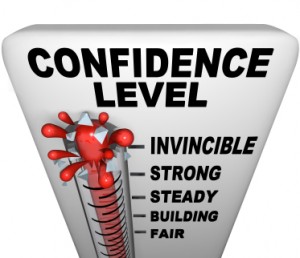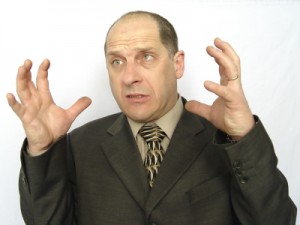 by Guila Muir
by Guila Muir
info@guilamuir.com
I have discovered that my clients all love a good hook, and are always looking for new ones. Let’s review what a Hook is and isn’t. Then I’ll provide two dynamic Hooks for you to use in your next presentation or training session.
What a Hook ISN’T:
Fluff. Never make the mistake of thinking that a hook is unimportant and can be left out. It is an essential part of the learning experience.
Lengthy. A hook is typically not a full-blown exercise, energizer or icebreaker.
A pre-test. Don’t use a hook to identify the “smartest guys in the room.”
A way to fill those nervous first moments of a training session when you feel least confident. A hook has a definite role. Don’t waste the precious first moments of a training session with comments about the weather or unrelated issues.
What a Hook IS:
- A way to immediately engage your listeners.
- Relatively short. Although there is no actual rule about length, the hook should serve its purpose concisely.
- Connected to the session’s topic or purpose. Although anything can serve as a hook, it should have a relationship to your session’s purpose. Don’t lob out a meaningless joke just to get laughs.
- Connected to who your participants are. You must know your audience’s concerns. The best hooks relate to their past experiences.
- Emotional, even if only mildly so. Adults become engaged through their emotions. Good hooks incite almost any kind of emotion, including laughter, groans of recognition, anxiety, or excitement.
- Inclusive. Use a hook that all the participants can relate to. Again, the best hooks elicit the past knowledge, emotions, and/or experiences of most people in your audience.
Developing a hook takes careful preparation. However, your participants’ immediate interest and involvement is on the line, so a little preparation on your part is worth the effort.
Two Dynamite Hooks
You can use literally anything as a hook. Trainers have used visual aids such as short videos or toys from the local Dollar store. They have used riddles, music, anecdotes, yoga stretches, and many more ways to immediately engage their participants.
The two Hooks I’ve outlined here have proven to work with a bang every time:
1. Real-life Questions
These may be the easiest type of hook to create. As for all hooks, make sure you know enough about your audience to use topics that resonate. Also, as in all hooks, ensure that your questions elicit an emotional response.
See if you can guess the topics for these Hooks:
“How many of you get so frustrated with your computer sometimes that you’d like to put your fist right through that screen?”
“Raise your hands if you’ve ever participated in a nightmare meeting.”
“Raise your hands if you’ve ever hit your boiling point around kids—even if you don’t have any!”
Guidelines:
- Always ask a minimum of two questions. You need this many to get your participants’ brains moving in the direction of your training session.
- Create your questions so that nearly everyone will respond in the same way (for example, 99% of hands in the room go up or down.)
- Insist on a physical response (hands up, stand up, thumbs up, etc.)
Option:
Start your questions with the following:
“How many of you would NOT be willing to…(Remember, your goal is to get everyone’s hands up. Asking in the negative may be more provocative and participatory than asking in the positive.)
2. “Did You Know?”
(Provocative Fact or Statistic)
The world is full of provocative statistics you can use to hook your participants. Just keep your eyes out as you read blogs, newspapers and articles. You can usually make the most unrelated statistic relevant to your participants.
See how one trainer brought together issues as diverse as strawberries and personal choices:
“Did you know… that Delta Airlines recently saved $210,000 a year simply by removing one strawberry from salads served in First Class? One little strawberry was removed and passengers didn’t even notice it. Big results can be achieved by little changes. Today, we’ll talk about how little changes in your thoughts and attitudes can have big results in your own life.”
Here are two other examples, used in actual classes:
1. “Did you know that in one second…
- A telephone signal can travel 100,000 miles?
- A hummingbird beats its wings 70 times?
- And guess what, in one second, eight million of your blood cells die.
A lot can happen in one second. This session will give you tools to decrease your response time in household emergencies.”
2. “Did you know that ‘Generation X’rs’ have watched 23,000 hours of television by the time they are 20 years old? They also believe they have a better chance of seeing a UFO in their lifetime than a Social Security check. In this workshop, we’ll see how generational differences in the workplace affect all of us.”
3. “Before the rule, more than 50 people here were dying in trenches every year. When you get killed in a cave-in, it’s not an easy way to go. You’re literally crushed to death under the weight of the soil. Soil weighs approximately 3,000 pounds per cubic yard. Nobody deserves to go to work and die that way.”
Guidelines:
- Turn a provocative fact into a hook simply by prefacing it with the words “did you know?”
- Make sure your data is correct.
- Make sure to integrate emotion.
- Consider combining your fact or statistic with another hook, such as a Real-life question.
Always use a Hook if you are serious about immediate engagement and interest!
Learn about Guila Muir’s Presentation Skills Workshops.
Guila Muir is a premiere trainer of trainers, facilitators, and presenters. Since 1994, she has helped thousands of professionals improve their training, facilitation, and presentation skills. Find out how she can help transform you from a boring expert to a great presenter: www.guilamuir.com

 Here’s a pet peeve of mine: Adult educators who call themselves “Facilitators”…and then go on to give a traditional, one-sided, PowerPoint-heavy training session. I estimate that 87.5% of trainers who call themselves “facilitators” are lying. Why? Because they model few skills of facilitation.
Here’s a pet peeve of mine: Adult educators who call themselves “Facilitators”…and then go on to give a traditional, one-sided, PowerPoint-heavy training session. I estimate that 87.5% of trainers who call themselves “facilitators” are lying. Why? Because they model few skills of facilitation.






 by Guila Muir
by Guila Muir by Guila Muir
by Guila Muir